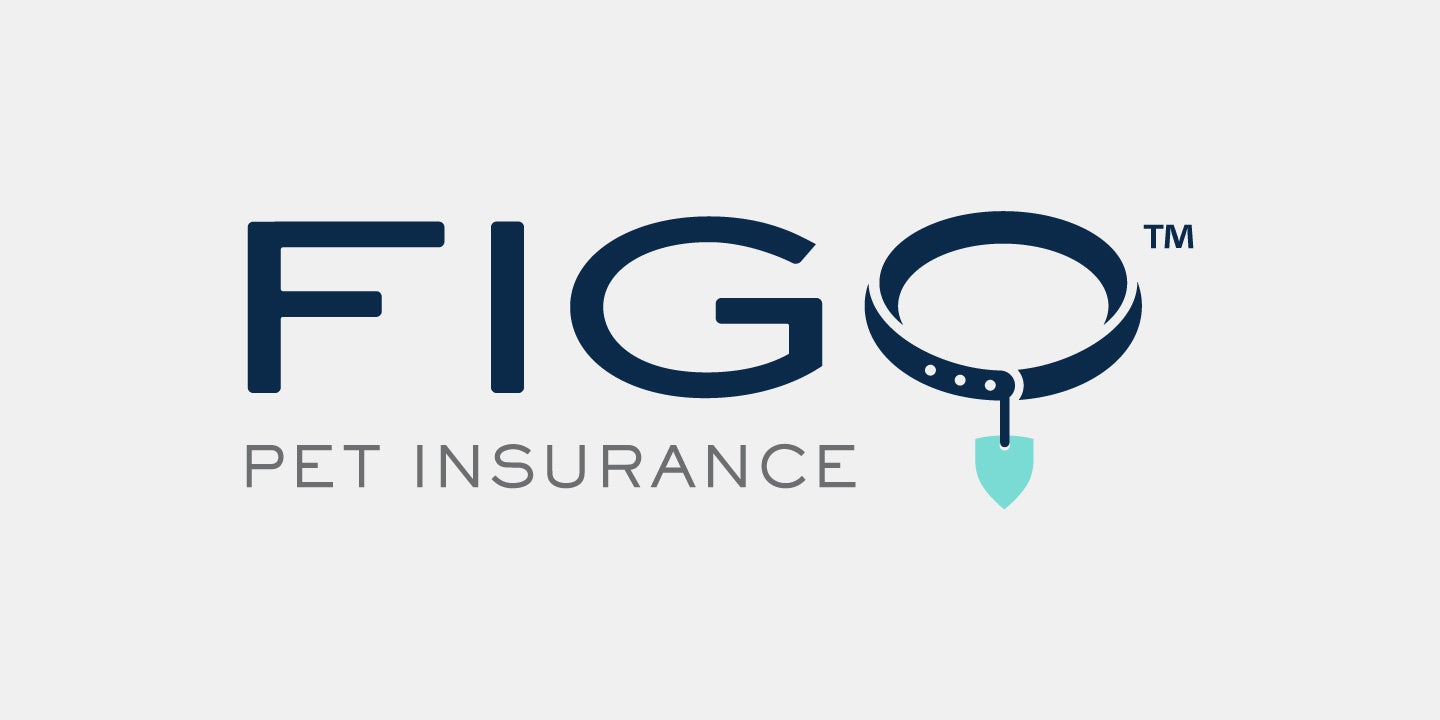Best pet insurance companies for June 2025
Choosing the right pet insurance can make all the difference when it comes to your pet's health and your financial peace of mind. With vet costs continuing to rise, having a solid insurance plan can help cover the costs of unexpected accidents, illnesses and even routine care. But with so many options available, how do you know which policy is the best fit for your pet?
To help you navigate the choices, the Bankrate team has compiled a list of the best pet insurance companies of 2025. Our research team compared insurance providers based on coverage options, affordability, customer satisfaction and unique features. Whether you’re looking for comprehensive accident and illness protection, wellness add-ons or budget-friendly plans, this list has something for every pet parent.
Best pet insurance companies
The best way to decide whether pet insurance is worth the cost is by shopping around for an insurance provider with a policy that suits your pet's needs (and your budget). To help you find the right policy, we've put in the legwork and reviewed the top pet insurance providers on the market.
Featured Bankrate Partner


4.6
-
Lemonade offers pet insurance coverage with a focus on simplicity and transparency. The company prioritizes quick and easy claims processing, streamlining the process of protecting your pet.
- Annual deductible options: $100, $250, $500 or $750
- Reimbursement percentage: 60, 70, 80 or 90 percent
- Annual maximum coverage: $5,000, $10,000, $20,000, $50,000 or $100,000
- Claim turnaround time: 2-4 days
Best for horse insurance plans


4.5
-
ASPCA Pet Health Insurance is committed to offering compassionate coverage and exceptional service to pet owners. With customizable plans and comprehensive benefits, the company prioritizes the well-being of pets and their owners.
- Annual deductible options: $100, $250 or $500
- Reimbursement percentage: 70, 80 or 90 percent
- Annual maximum coverage: $2,500, $5,000, $7,000 or $10,000
- Claim turnaround time: Up to 30 days
Best for healthy pet discounts


4.6
-
Embrace Pet Insurance stands out for its commitment to offering flexible coverage options tailored to the diverse needs of pets and their owners. Pet owners can tailor their coverage with optional add-ons such as wellness rewards and prescription drug coverage.
- Annual deductible options: $100, $250, $500, $750 or $1,000
- Reimbursement percentage: 70, 80 or 90 percent
- Annual maximum coverage: $5,000, $8,000, $10,000, $15,000 or unlimited
- Claim turnaround time: 10–15 days for accidents or illness and up to 5 days for Wellness Rewards claims
Best for pre-existing condition coverage


4.6
-
Figo Pet Insurance stands out for its comprehensive coverage and swift claim turnaround time, ensuring pets receive the care they need without delay. With customizable plans and competitive rates, Figo provides pet owners with peace of mind and financial security.
- Annual deductible options: $100, $250, $500 or $750
- Reimbursement percentage: 70, 80, 90 or 100 percent
- Annual maximum coverage: $5,000, $10,000 or unlimited
- Claim turnaround time: 2–3 working days
Best for reliable coverage and exceptional customer service


4.6
-
Hartville Pet Insurance prioritizes reliability and customer satisfaction, making it a great option for pet parents on the hunt for dependable coverage and attentive service. With efficient claim processing and responsive customer support, Hartville hits the mark in terms of streamlining the process and ensuring positive results (for eligible claims) for pet owners.
- Annual deductible options: $100, $250 or $500
- Reimbursement percentage: 70, 80 or 90 percent
- Annual maximum coverage: $2,500, $4,000, $5,000, $7,000 or $10,000
- Claim turnaround time: 30 days or less
Best for shortest waiting period for accident coverage


4.7
-
MetLife Pet Insurance is a great option for pet owners who are after swift coverage and comprehensive protection. With customizable plans and a commitment to meeting the diverse needs of pets, MetLife ensures peace of mind for pet owners at every stage of their pet's life. It's also one of the few insurers to offer coverage for exotic pets.
- Annual deductible options: $50, $100, $250, $500 or $2,500
- Reimbursement percentage: 70, 80 or 90 percent
- Annual maximum coverage: $2,000, $5,000 or $10,000
- Claim turnaround time: 5–10 days
Best for customizable options for pets of all ages
4.5
-
Pets Best is a standout pet insurance provider renowned for its comprehensive coverage options and exceptional service. The company offers a range of customizable plans designed to meet the diverse needs of pet owners.
- Annual deductible options: $50, $100, $200, $250, $500 or $1,000
- Reimbursement percentage: 70, 80 or 90 percent
- Annual maximum coverage: $5,000, $10,000 or unlimited
- Claim turnaround time: 5 days or less
Best for an accident-only plan
4.2
-
In partnership with Pets Best, Progressive Pet Insurance offers innovative coverage options and seamless service to pet owners. With customizable plans and user-friendly technology, Progressive prioritizes peace of mind and protection for pets throughout their lives.
- Annual deductible options: $50, $100, $200, $250, $500 or $1,000
- Reimbursement percentage: 70, 80 or 90 percent
- Annual maximum coverage: $5,000, $10,000 or unlimited
- Claim turnaround time: 5-7 days
Best for no upper age limits


4.3
-
Spot Pet Insurance stands out for being one of the most affordable pet insurance companies, offering straightforward coverage options tailored to pets' essential needs. With a wide range of deductible options and reimbursement percentages, Spot Pet Insurance ensures pet owners can find a plan that fits their budget and coverage needs.
- Annual deductible options: $100, $250, $500, $750 or $1,000
- Reimbursement percentage: 70, 80 or 90 percent
- Annual maximum coverage: $2,500, $3,000, $4,000, $5,000, $7,000, $10,000 or unlimited
- Claim turnaround time: 80 percent of direct payments made within 5 minutes
Do you need pet insurance?
Pet insurance isn’t mandatory, but it can provide peace of mind and financial security. If covering a major vet bill would be difficult, or you want to ensure your pet has access to the best care without financial stress, it may be a worthwhile investment. However, if your budget allows you to cover unexpected vet bills out of pocket or from a pet savings account, you may not need pet insurance.
Here are a few situations when pet insurance may be the right choice:
- Your pet's breed is prone to hereditary conditions.
- You want access to comprehensive and ongoing care options. By covering both immediate and long-term healthcare needs, pet insurance empowers you to provide consistent, high-quality care throughout your pet’s life.
- You have concerns about your ability to cover emergency expenses.
- You prefer the idea of budgeting for your pet's care with manageable monthly premium payments.
- Your pet's lifestyle may be considered risky. Active pets, outdoor explorers and curious eaters may be more prone to accidents or injuries.
How do you pick a pet insurance company?
Choosing the right pet insurance company involves comparing policies, coverage options, costs and customer service to find the best fit for your pet’s needs and your budget. Consider the following points while doing your research:
- Customer service: Look at customer satisfaction ratings, reviews and complaince records. Finding a company with responsive customer service and a straightforward claims process is crucial.
- Exclusions: Most policies exclude pre-existing conditions, some hereditary issues and certain treatments. Pet insurance companies typically do not cover breeding and pregnancy-related costs. Coverage for costs relating to complementary treatments also varies depending on the provider. Read the fine print to avoid surprises.
- Location: Confirm the insurer operates in your state to ensure coverage at nearby vets, specialists or emergency clinics. Regional availability often varies by the provider (and in some cases the underwriter).
- Pet age: Young puppies or kittens and furry senior citizens may have more healthcare needs.
- Pet breed: Certain breeds are prone to specific health conditions. Look for policies that address breed-related needs, such as genetic or congenital conditions.
- Plan options and costs: Choose a plan that fits your budget. Options range from accident-only and comprehensive to wellness plan add-ons and optional riders. A good plan balances affordability with adequate coverage. Many insurers let you adjust deductibles, reimbursement rates and nnual coverage limits.
- Pre-existing conditions: Look into the insurer’s stance on pre-existing conditions. Some may cover "treatable" or "curable" pre-existing conditions after a specified symptom-free period.
- Special needs: If you are looking to insure an exotic pet or horse, verify that policies cover these types of pets, as most plans focus on cats and dogs. Breeding and pregnancy-related or complementary treatment costs are also not commonly covered by pet insurance companies.
- Waiting periods: Familiarize yourself with your insurance policy's waiting periods so you know exactly when the coverage begins for specific conditions, injuries or illnesses.
In a nutshell, you need to shop around and compare providers to find a company and policy that fits. Look for flexible plan options, transparent terms and a solid reputation for customer service to ensure you're making the best choice for your wallet and your pets.
How to get the most out of pet insurance
There are numerous cheap pet insurance companies whose goal is to make pet insurance more accessible. However, apart from finding an affordable pet insurer, a few tricks of the trade can save you even more money on pet insurance:
- Annual vs. monthly payments: Paying annually often comes with a slight discount compared to monthly premium payments.
- Multi-pet discounts: These are commonly offered to families with more than one pet, lowering overall premiums.
- Military discounts: These may apply to veterans or those in active service.
- Veterinary or employer partnerships: Some insurers work with specific vets or through employer benefit programs to offer savings.
Shopping around and asking about available discounts can help you reduce costs and get the most value from your policy.
Consult your veterinarian for recommendations
Veterinarians and their staff deal with pet insurance claims regularly. They can give you valuable insight as to which insurers they find easier to work with, which are more likely to accept a claim and which companies offer a fair exchange in value. They may even know some loopholes that can help get procedures covered.
Pro tip: Consider expert pet insurance reviews and customer experiences to understand how a company handles claims.
Pros and cons of pet insurance
Like any financial decision, investing in pet insurance comes with its own set of advantages and disadvantages. Weighing the pros and cons of pet insurance and how they align with your needs and expectations will help you decide whether pet insurance is the right choice for your family.
Pros
-
Accessible care: Pet insurance often allows you to see any licensed veterinarian, specialist or emergency clinic.
-
Add-ons and riders: Some add-ons or riders cover things like dental illnesses or procedures, prescription medications or food and complementary treatments such as physical therapy, acupuncture and behavioral training.
-
Comprehensive treatment options: Insurance lets you consider a wider range of treatment options without financial stress.
-
Financial protection: Insurance helps mitigate high veterinary costs, especially for emergencies and chronic conditions.
-
Flexible coverage: Many insurers let you customize policies, from accident-only to wellness packages covering routine care. Look into whether the policy or add-on you're considering includes coverage for things like microchipping and spaying or neutering.
-
Predictable costs: With a fixed premium, budgeting for your pet’s health becomes easier.
Cons
-
Complex policies: Pet insurance policies can be challenging to understand, with some treatments excluded or capped.
-
Exclusions and limitations: Policies often exclude pre-existing, hereditary or breed-specific conditions.
-
Premium increases: As pets age, premiums often increase, making the plan more costly over time.
-
Upfront costs: Most pet insurance requires you to pay the vet and then file for reimbursement.
-
Waiting periods: New policies come with waiting periods that are strictly enforced (unless the insurance provider offers a waiting period waiver).
Why the right pet insurance is important
Choosing the right pet insurance helps ensure your pet receives the best possible care without placing you under financial strain. Veterinary treatments for accidents, illnesses and chronic conditions can be expensive, and unexpected bills can quickly add up. A well-chosen pet insurance policy helps cover these costs, giving you peace of mind and allowing you to make medical decisions based on what’s best for your pet rather than what you can afford.
Additionally, the right policy can help you pay for a broader range of treatments, including emergency care, specialist visits and even alternative therapies. Some plans also offer preventive care coverage, helping you keep your pet healthy before major issues arise. By choosing a plan that fits your pet’s needs and your budget, you’re investing in their long-term well-being while protecting yourself from financial stress.
That said, it’s crucial to carefully read and understand your policy to make the most of your coverage. Pay close attention to the fine print outlining terms and conditions, as small details can make a big difference.
When choosing the best pet insurance provider and policy, start by evaluating your pet’s potential healthcare needs and your budget. Take the time to compare options and find a plan that offers the best coverage at a price that works for you.